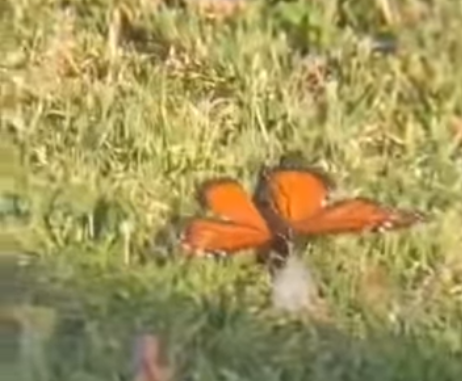The public comment for listing the Monarchs on the endangered species list ended last night at midnight. Our fingers are crossed but we are planning for the worst.
In 2019, the Trump administration proposed regulatory changes to the Endangered Species Act (ESA), including narrowing the definition of the word “harm.” Under the longstanding interpretation upheld by the U.S. Supreme Court, “harm” included not only direct injury or killing of endangered species but also significant habitat modification—actions that indirectly lead to death or injury by impairing critical life processes such as breeding or feeding. Removing or limiting this term would drastically reduce protections for species like the monarch butterfly, whose survival depends on specific habitat conditions. Monarchs rely on milkweed for reproduction and intact migratory corridors to survive seasonal transitions.

Without the broader legal definition of “harm,” the destruction of milkweed, pesticide spraying, and development along migratory paths would no longer be grounds for enforcement, even though such activities contribute significantly to monarch population decline. This regulatory rollback, therefore, undermines proactive conservation and weakens the foundational mechanisms of species protection.
Why Removing “Harm” Matters – Especially for Monarch Butterflies
The Endangered Species Act (ESA) defines “harm” broadly to include significant habitat modification or degradation that kills or injures wildlife. This includes indirect impacts, such as pesticide use or land development that disrupts breeding, feeding, or migratory patterns—even if the animals aren’t directly killed.
🦋 Monarch Butterflies: Highly Vulnerable to Habitat Harm
Monarchs depend on:
Milkweed plants for larval development
- Overwintering forest groves in California and Mexico
- Migratory corridors free of herbicides or development
- If the word “harm” were removed from the ESA:
- Habitat destruction (e.g., milkweed eradication for agriculture or development) may no longer be a legally punishable offense.
- Pesticide use that indirectly kills larvae or pollutes feeding grounds might be permissible.
- It would limit legal grounds for preventative conservation—allowing irreversible damage before monarchs are even officially listed as endangered.
Legal Precedent
In Babbitt v. Sweet Home Chapter of Communities for a Great Oregon (1995), the Supreme Court upheld that “harm” includes habitat modification—a critical win for species like monarchs who depend on fragile ecological webs.
Without the term “harm,” the ESA would largely protect species only from direct killing, not the broader environmental threats that are more common in the case of insects like the monarch butterfly.
Here’s a side-by-side breakdown of how the Trump administration’s 2019 ESA rule changes impacted the application of the term “harm”—especially in the context of monarch butterfly protections under habitat-based threats.
Key ESA Components: Then vs. Now
| ESA Component | Pre-2019 (Original Interpretation) | Post-2019 (Trump-Era Revision) |
|---|---|---|
| Definition of “Harm” | Included indirect effects, like habitat destruction, that could injure or kill a species [Sweet Home case (1995)] | No change to the word itself, but narrowed implementation: weakened protections for habitat-based harm |
| Foreseeable Future (for listing) | Interpreted broadly to consider future threats (e.g., climate, habitat loss) | Redefined to limit protections to threats that are “likely” and with strong scientific certainty, reducing preemptive action |
| Listing as Threatened Species | Automatically extended Section 9 protections (prohibiting harm, harassment, habitat destruction) to threatened species | Removed automatic protections for threatened species; protection now requires case-by-case rules (4(d) rules) |
| Critical Habitat Designation | Allowed designation of unoccupied habitat if it was essential for recovery | Required occupied habitat first, making it harder to designate new areas for species like monarchs during migration |
| Economic Considerations | ESA decisions were made solely on biological data, not cost | Allowed economic impact disclosures during listing decisions, which may bias decisions against species with large land use costs |
| Cumulative/Indirect Effects | Agencies had to consider cumulative environmental impacts, like pesticides, land-use changes | Narrowed analysis to direct effects only, making it harder to link habitat harm or migration disruption to legal violations |
🦋 Impact on Monarch Butterflies
Monarchs are especially reliant on habitat protections, including:
- Milkweed presence across breeding ranges
- Protection of overwintering grounds
- Migratory corridors free from herbicide spraying or land development
Under the post-2019 rules, these indirect and landscape-scale threats would not necessarily be treated as “harm” in enforcement—particularly for monarchs if they’re only listed as threatened and not endangered.
Thus, the Trump-era changes reduced legal grounds for protecting monarch habitat before catastrophic population loss occurs.

